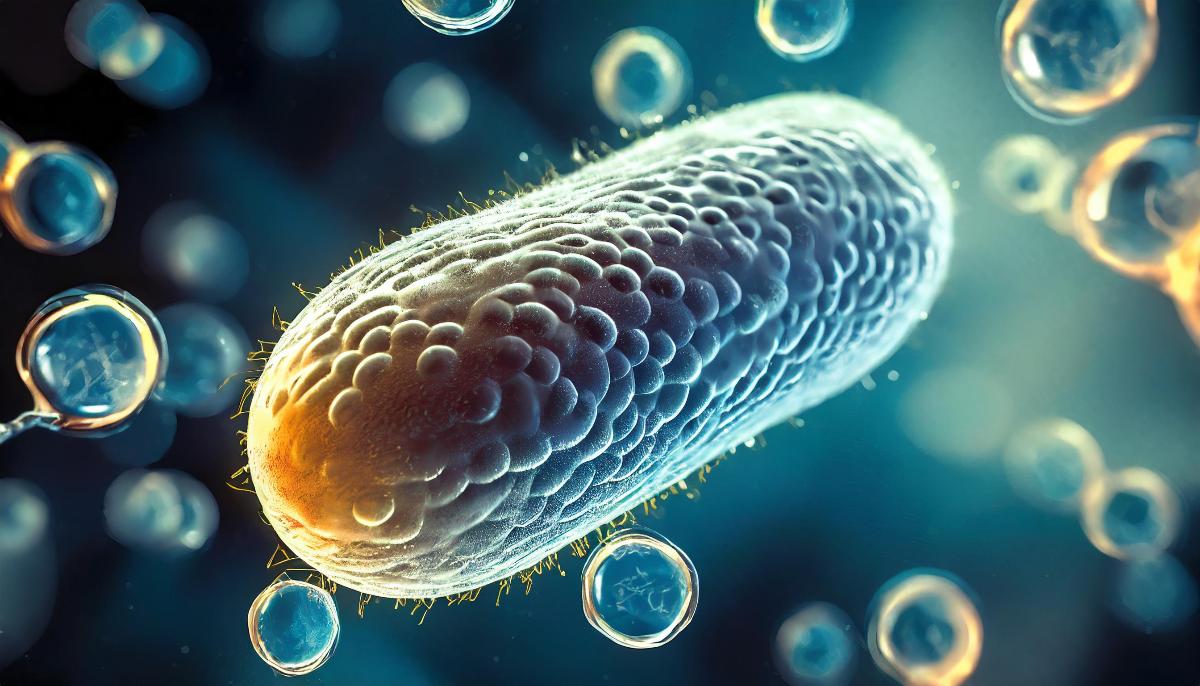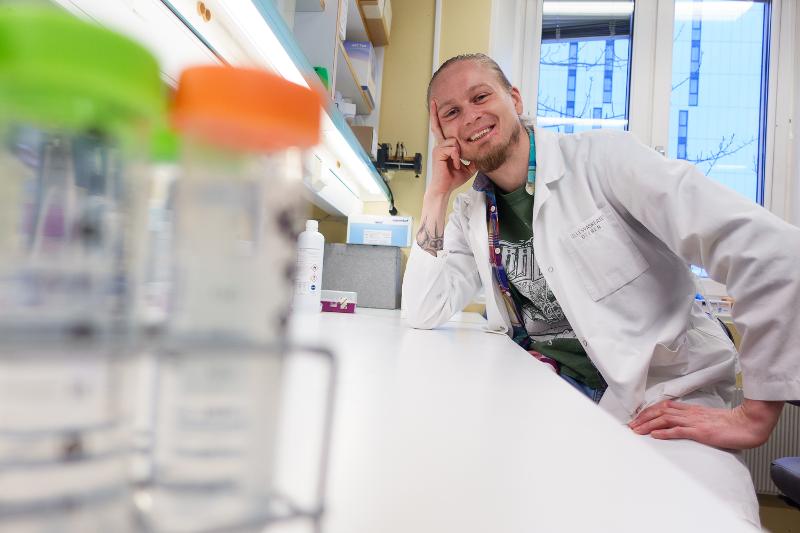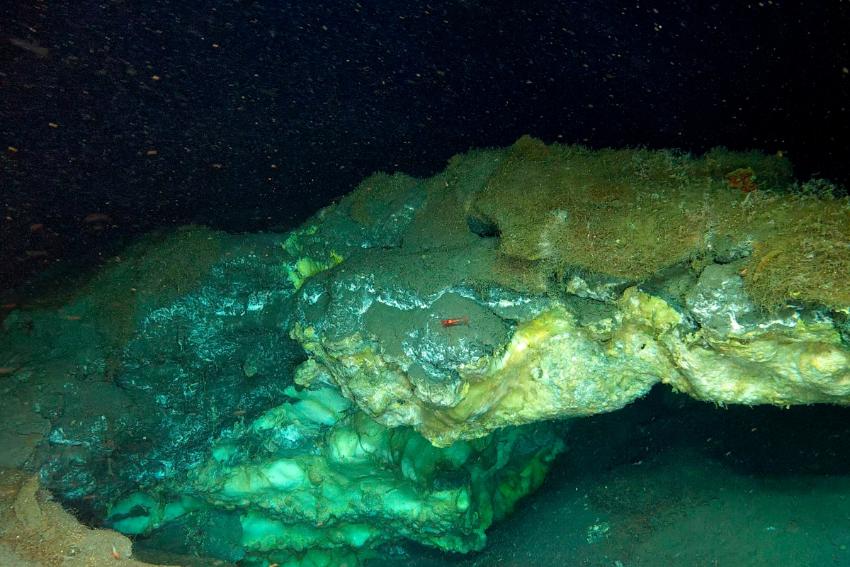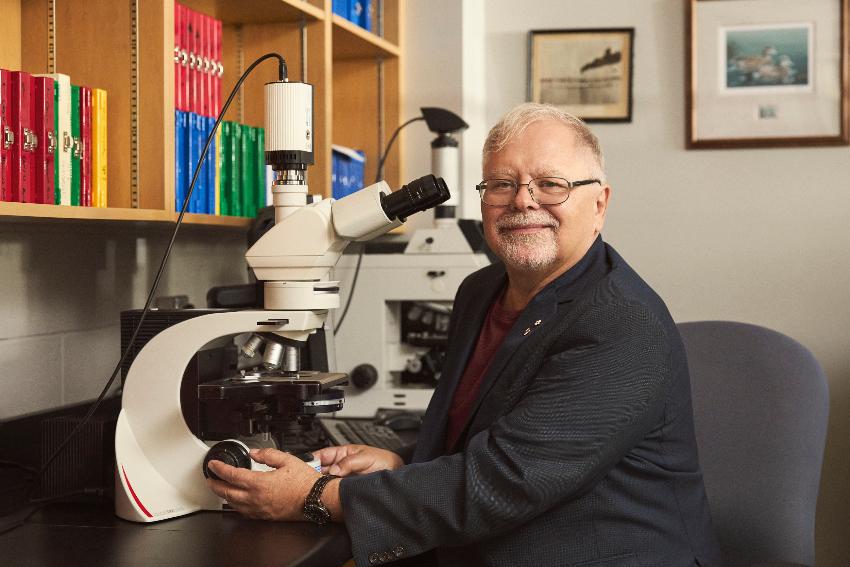Bacterial membrane satellites prove important testing ground for new antibiotics
The membrane is the bacteria’s most important line of defense against our antibiotics. When it sheds part of that defense, the discarded leftovers now prove to be key players in our fight against antibacterial resistance.

By Maxim Bril'kov, researcher at UiT until April 2024.
In the relentless battle against antibiotic resistance, scientists are continually seeking innovative strategies to combat drug-resistant infections. Today we found a clever way to study how antibiotics interact with bacteria, and the interesting part is that bacteria themselves gave us a hint on how to do it.
Now we are making strides in tackling the antibacterial resistance crisis by developing new methods to understand how new antibiotics work.
Natural barriers
Bacterial membranes protect the contents of bacterial cells. However, they also control the bacteria’s interactions with their surrounding environment.
These membranes act both as gatekeepers, regulating the flow of nutrients into the cells and the removal of waste products. Each bacterial species possesses unique membrane characteristics that influence their function. When fighting bacterial infections, these barriers represent the initial obstacle against our antibiotics.
Our research initiative focuses on developing methods to study bacterial membranes, particularly how drugs interact with and penetrate these natural barriers that shield bacteria from their environment and from antibiotics. Understanding the membranes is crucial to understanding the mechanisms underlying antibiotic resistance.

Artificial membranes not complex enough
Bacterial membranes are very complex structures with many components and with specific variations for different bacteria strains. While synthetic models that use artificial lipids have been employed in the past to mimic bacterial membranes, they lack the intricate complexity of authentic membranes. Recreating the native complexity of membranes synthetically proves challenging and costly.
On the other hand, using whole bacteria to study the interaction mechanisms presents its own problems due to the organism's high complexity, making it difficult to distinguish processes occurring at the membrane from other activities in the bacterial cell. Nevertheless, we have turned towards the bacteria itself for inspiration to overcome this challenge.
Discarded membrane bubbles
Many bacteria naturally release extracellular vesicles, or tiny spherical structures made of fats that maintain a composition that resembling the original membrane. These vesicles serve various roles in physiological and disease-causing (pathogenic) processes. This includes defense mechanisms against antibiotics that attack the bacterial membrane and the communication between bacteria. Yes, they actually do communicate with each other. They even share resistance genes using these vesicles!
We chose multidrug-resistant strains isolated from the University Hospital of Northern Norway, including Klebsiella pneumoniae, Acinetobacter baumannii, and Pseudomonas aeruginosa to work with. These bacteria are all listed as critical priority strains to watch out for by the World Health Organization (WHO).
In our research, we have established an efficient way of collecting and isolating these vesicles. We have thoroughly characterized their physical properties and chemical composition, and we compared them to the bacterial membranes that released them.
New testing ground
By examining the interaction between the vesicles and antibiotics, we have found differences in how the drugs interact within selected bacterial strains, advancing our understanding of the mechanisms behind antibacterial resistance.
All in all, these naturally produced vesicles – or the membrane bubbles if you will - serve as natural models of the membranes and provides physiologically relevant insights. This in turn allows us to develop smarter strategies for designing and testing new antibiotics to combat resilient bacteria and safeguard public health.
Scientific reference
“Bacterial extracellular vesicles: towards realistic models for bacterial membranes in molecular interaction studies by surface plasmon resonance»
https://www.frontiersin.org/articles/10.3389/fmolb.2023.1277963/full
Contact information
Maxim Bril’kov
thndrfngrs@gmail.com (private e-mail)
Phone: +47 46 55 54 21
Bacteria: The ultimate survivors
Bacteria are microorganisms that live in virtually every corner of our planet, including us. They play crucial roles in maintaining the ecological balance and human well-being. Yet, their presence can also disrupt this delicate balance, leading to negative effects on both human health and the environment.
One of the most pressing challenges we face today is antibiotic resistance, a consequence of bacteria adapting to survive the widespread use of antibiotics. Disease-causing bacteria that have acquired resistance present an escalating global threat, leading to prolonged illness, increased mortality, and significant economic burdens for both countries and individuals.
To confront this urgent issue, we must explore and develop new classes of antibiotics, while deepening our understanding of the resistance mechanisms at work.
Learn more at CANS - Centre for New Antibacterial Strategies
-
Fiskeri- og havbruksvitenskap - bachelor
Varighet: 3 År -
Fiskeri- og havbruksvitenskap - master
Varighet: 2 År -
Akvamedisin - master
Varighet: 5 År -
Bioteknologi - bachelor
Varighet: 3 År -
Arkeologi - master
Varighet: 2 År -
Geosciences - master
Varighet: 2 År -
Biology - master
Varighet: 2 År -
Physics - master
Varighet: 2 År -
Mathematical Sciences - master
Varighet: 2 År -
Biomedicine - master
Varighet: 2 År -
Public Health - master
Varighet: 2 År -
Computational chemistry - master
Varighet: 2 År -
Biologi - bachelor
Varighet: 3 År -
Medisin profesjonsstudium
Varighet: 6 År -
Nordisk - årsstudium
Varighet: 1 År -
Luftfartsfag - bachelor
Varighet: 3 År -
Pedagogikk - bachelor
Varighet: 3 År -
Bioingeniørfag - bachelor
Varighet: 3 År -
Informatikk, datamaskinsystemer - bachelor
Varighet: 3 År -
Informatikk, sivilingeniør - master
Varighet: 5 År -
Likestilling og kjønn - årsstudium
Varighet: 1 År -
Geovitenskap- bachelor
Varighet: 3 År -
Biomedisin - bachelor
Varighet: 3 År -
Kjemi - bachelor
Varighet: 3 År -
Psykologi - bachelor
Varighet: 3 År -
Matematikk - årsstudium
Varighet: 1 År -
Ergoterapi - bachelor
Varighet: 3 År -
Fysioterapi - bachelor
Varighet: 3 År -
Radiografi - bachelor
Varighet: 3 År -
Samfunnssikkerhet - master
Varighet: 2 År -
Farmasi - bachelor
Varighet: 3 År -
Farmasi - master
Varighet: 2 År -
Romfysikk, sivilingeniør - master
Varighet: 5 År -
Klima og miljøovervåkning, sivilingeniør - master
Varighet: 5 År -
Bærekraftig teknologi, ingeniør - bachelor
Varighet: 3 År -
Psykologi - årsstudium
Varighet: 1 År -
Odontologi - master
Varighet: 5 År -
Tannpleie - bachelor
Varighet: 3 År -
Anvendt fysikk og matematikk, sivilingeniør - master
Varighet: 5 År -
Sykepleie - master
Varighet: 2 År -
Barnevern - bachelor
Varighet: 3 År -
Sosialt arbeid - bachelor
Varighet: 3 År -
Idrettsvitenskap - master
Varighet: 2 År -
Sosialt arbeid - master
Varighet: 2 År -
Praktisk-pedagogisk utdanning for trinn 8-13 - årsstudium (deltid)
Varighet: 2 År -
Vernepleie - bachelor
Varighet: 3 År -
Internasjonal beredskap - bachelor
Varighet: 3 År -
Barnevern - bachelor
Varighet: 3 År -
Vernepleie - bachelor (deltid)
Varighet: 4 År -
Ernæring - bachelor
Varighet: 3 År


